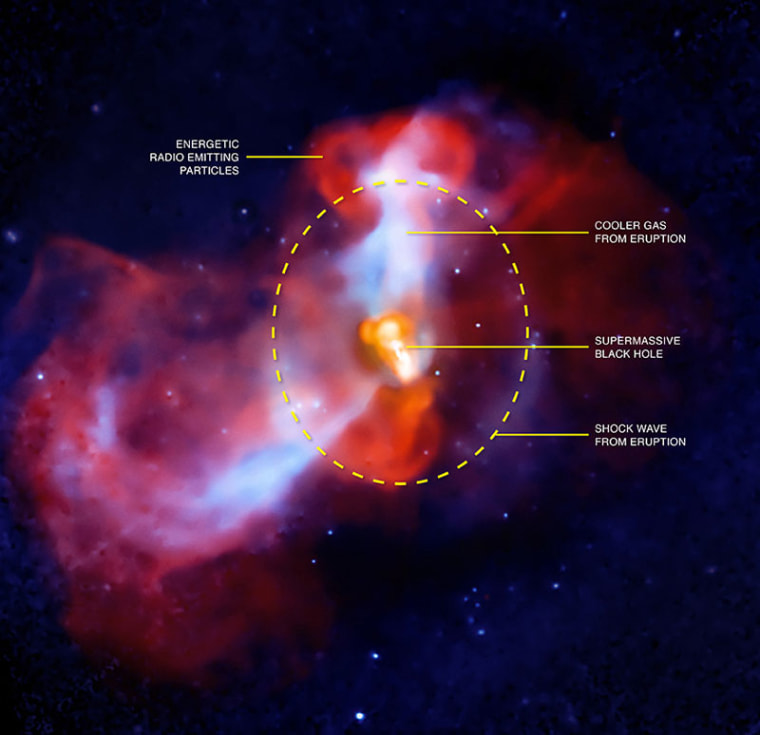A galactic "supervolcano" in the massive galaxy M87 is erupting, blasting gas outwards. The cosmic volcano driven by a giant black hole in M87's center is preventing hundreds of millions of new stars from forming.
An image, taken by NASA's Chandra X-ray Observatory and the National Radio Astronomy Observatory's Very Large Array, captures the drama in action. [ Photo of the galactic "supervolcano." ]
"Our results show in great detail that supermassive black holes have a surprisingly good control over the evolution of the galaxies in which they live," said Norbert Werner of the SLAC National Accelerator Laboratory in Melo Park, Calif., who led one of two studies of M87's black hole and its effects. "The black hole's reach extends ever farther into the entire cluster, similar to how one small volcano can affect practically an entire hemisphere on Earth."
X-ray galaxy
M87 is about 50 million light-years from Earth and lies at the center of the Virgo cluster, which contains thousands of galaxies. M87 is filled with hot gas that emits X-ray light, which is detectable by Chandra. As the gas cools, it can fall toward the galaxy's center, where it should continue to cool even faster and form new stars.
Yet, radio observations from the Very Large Array suggest that in M87, jets of very energetic particles produced by the black hole interrupt this process. These jets lift up the relatively cool gas near the galaxy's center and produce shock waves in the galaxy's atmosphere from their supersonic speed.
Scientists have found that the interaction of this cosmic "eruption" with the galaxy's environment is very similar to volcanic processes on Earth. In particular, the researchers compared it to the aftermath of the Eyjafjallajokull volcanic eruption, which forced much of Europe to close its airports earlier this year.
The energetic particles produced near the black hole rise through the X-ray-emitting atmosphere of the cluster, lifting up the coolest gas near the center of M87 in their wake, similar to the way hot volcanic gases drag up clouds of dark ash.
Galaxy's gas plumes
In M87, the plumes of cooler gas being lifted upward contain as much mass as all of the gas contained within 12,000 light-years of the center of the galaxy cluster. The black hole-powered supervolcano is thus very efficient at blasting the galaxy free of the gas that would otherwise cool and form stars.
"This gas could have formed hundreds of millions of stars as massive as our own sun, if the black hole had not removed it from the center of the galaxy," said Evan Million, a graduate student at Stanford University in Palo Alto, Calif., and lead author of a second paper to be published about M87.
The eruption within M87 that lifted up the cooler gas likely occurred about 150 million years ago, but a smaller eruption only about 11 million years earlier produced the shock wave, the researchers said. The Chandra image was based on an observation lasting almost 7 days.
The two papers describing these results will appear in the journal of the Monthly Notices of the Royal Astronomical Society.
